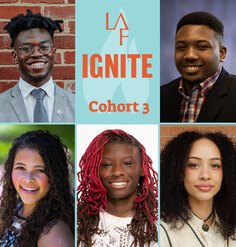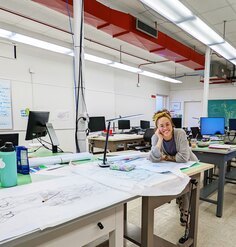Olmsted Scholar Feature: Reframing the Argument for Sustainability
By Peter J. Ellery, 2012 University Olmsted Scholar
One of the most difficult tasks we face as professionals charged with shaping the environment is convincing our clients, and indeed the public at large, of thinking more sustainably. While this argument has ebbed and flowed in response to political and social conscience, it has been mostly moot in influencing any large-scale social change. This is in spite of the consequences now being seen in some areas of the world and scientific forecasts that paint an even bleaker future. So why is this sustainability argument highlighting our self-demise not working?
In response to this issue, art and architectural historian Dr. Rodhri Windsor-Liscombe, suggests, “The arguments for sustainability tend to be excessively technical or technocratic, preoccupied with instrumental or technological solutions, cast in cataclysmic narrative or disconnected from individual behaviour. Each provides opportunities for the average citizen to either detach themselves from the problems and potential solutions or to expect others, be they corporations or governments, to correct the situation.” If we continue to frame this argument using strategies that emphasize cataclysmic or punishment-based “stick” scenarios to threaten us, is change likely?
We currently use a “pathogenic” or disease management approach when arguing for sustainability and changes to the general public’s behavior. This approach emphasizes the identification and treatment of the problem, along with the consequences we face should the problem continue unresolved. In contrast, a better approach might be to utilize a “salutogenic” perspective to promote sustainable choices and behavior change. This perspective emphasizes environmental choices and behaviors because of the inherent value they provide, rather than what they help us to avoid. Central to this approach is the framing of the sustainability argument so that it falls within the general public’s sense of coherence. This involves presenting the argument to the public in a way that is meaningful, manageable, and comprehensible to them.
For the sustainability argument to be meaningful, it has to allow the public to see the value in making these decisions. For example, rather than using scientific or economic concepts like carbon footprint, or carbon credits, that have little meaningful value to the general public, consider highlighting the positive rewards that result from sustainable choices. This could involve showing how a green roof helps businesses save money in terms of heating and cooling costs, and for some, this might be the right motivation needed to make this choice. However, the general public will also respond to rewards that are intrinsic to the environment as well. For example, the argument for a green roof or space around a building being dedicated to vegetation and trees only, becomes much more compelling if you emphasize the smell of the garden in spring, the view of the garden from overlooking office windows, and the opportunity for those working in nearby areas to have lunch and relax in a shaded, park setting.
Second, the ideas offered in sustainability arguments must be manageable. They have to fit within the public’s life patterns and daily routines. The public is unlikely to walk or ride a bicycle to work in locations where vehicular traffic is a safety issue, the weather is extreme in either heat or cold, or if the distance is excessive. For those required to wear a suit as part of their job, even providing shower and changing facilities at work may not be enough if they do not have the extra time needed for the commute or to bathe and dress in their daily routine. Emphasizing strategies and design features that address these concerns, and yet still fit within the public’s existing lifestyle is essential to successfully arguing for sustainable behaviors.
Finally, we have to consider what the public finds comprehensible to their way of life. For example, it is not that the public is against the idea of wind powered energy systems. As Steffen Danborg of the Danish Wind Industry Association explains, the public in general is very supportive of wind-powered energy. The concern, in many cases, lies in the locating of windmills and windmill farms that generate this energy. It is simply difficult for some people to accept such an intrusive addition to their current understanding of the environment in which they live. As a result, arguments like noise, electro-magnetic interference, and visual eyesore (either real or perceived) are used in the “not in my backyard” counter arguments, which often lead to legal action and delays in wind power development. Interestingly, research shows public opinion changes in a positive and accepting direction, once people become acclimated to the presence of the wind turbines. The moral here is that our sustainability arguments need to consider the amount of change that those involved will need to accommodate (again, either real or perceived), and either introduce the change slowly so that acclimation can occur, or use a less intrusive approach so that change occurs within parameters of our understanding of the world in which we live.
The essential point being made here is that we need to change the way in which the case for sustainable development is presented. It is time to acknowledge that the current cataclysmic threat or “stick” approach to the sustainability argument has provided little motivation for change in public behavior, and instead, more meaningful, manageable and comprehensible strategies are necessary to get this sustainability “mule” moving in the right direction.
Peter Ellery is in his final year of a Master of Landscape Architecture degree at Ball State University. His thesis explores the expansion of educational opportunities through environmental design and looks at how an effectively landscaped environment can both enhance and extend the primary school curriculum of a Building Tomorrow Foundation Primary School in rural Uganda.











